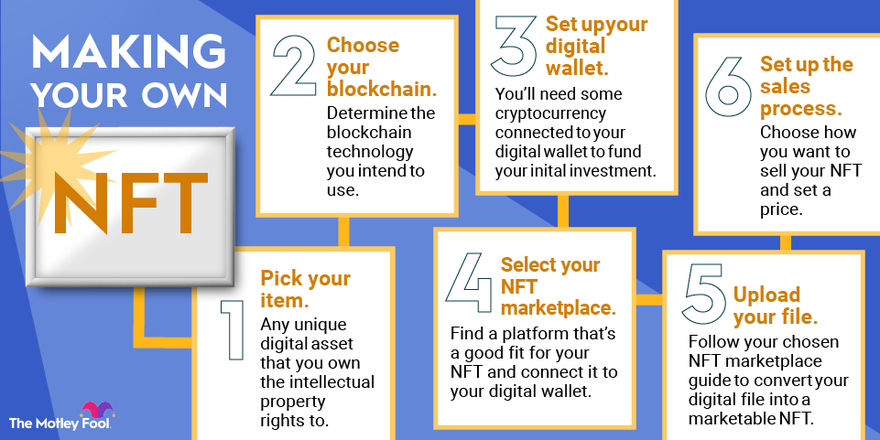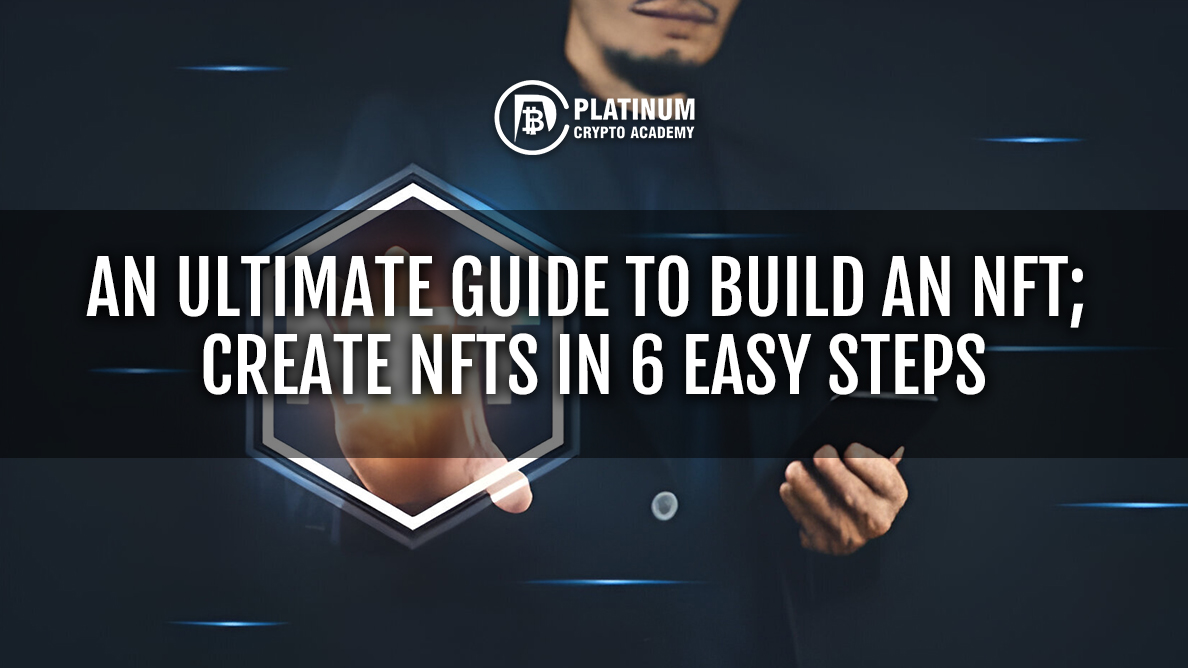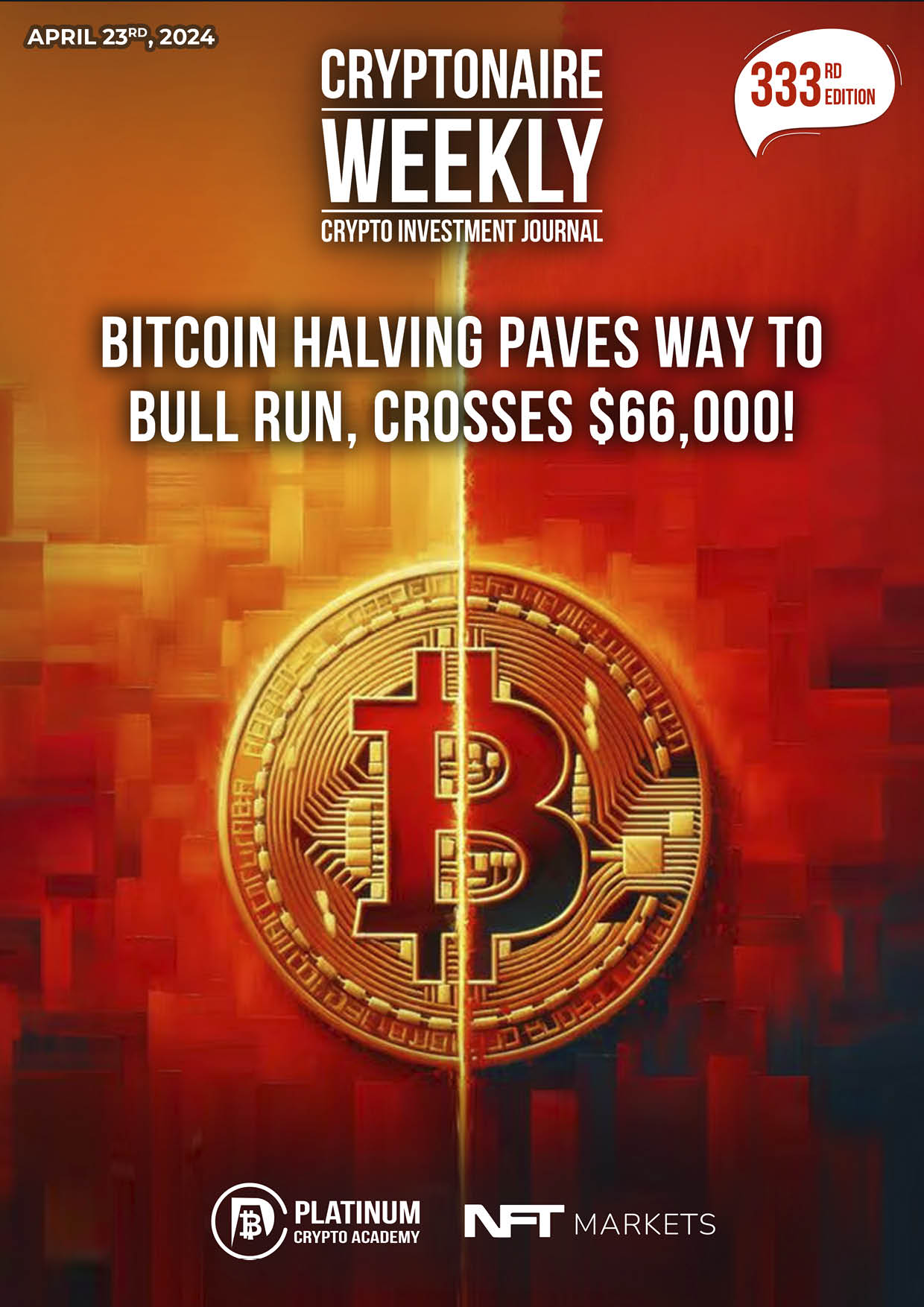Exploring the process of creating an NFT is a growing interest for many individuals nowadays. With the escalating buzz surrounding NFTs, more people are eager to delve into this innovative trend and understand how they can capitalize on it. In this guide, you’ll uncover the steps to crafting an NFT and leveraging it to your advantage.

Understanding Non-fungible Tokens (NFTs)
To embark on the journey of creating an NFT, it’s crucial to grasp the fundamentals. While NFTs are commonly associated with digital artwork, their scope extends far beyond mere image files. These tokens can represent various assets, including domain names, game items, event tickets, and much more. NFTs are intricately linked with the metaverse, intersecting with elements like avatars and virtual pets.
At the core, NFTs are unique and non-interchangeable digital assets secured on the blockchain. Their uniqueness sets them apart, granting ownership rights to a singular individual. This groundbreaking feature of NFTs revolutionizes the concept of digital ownership.
Who Can Create an NFT?
Contrary to common belief, the creation of NFTs does not necessitate central authority or intricate processes akin to minting currency. In reality, anyone with a modest initial investment can mint NFTs. Numerous popular NFT marketplaces offer user-friendly tools for NFT creation, making the process accessible to a wide audience.
While artists often transform digital artworks like music and graphics into NFTs, the scope of NFT creation extends beyond the digital realm. Physical items such as photographs, drawings, and other tangible assets can also be tokenized and linked to the blockchain.
By understanding the fundamentals of NFTs and the accessibility of NFT creation, individuals can explore the vast potential of this burgeoning digital landscape. Whether venturing into the world of digital art or seeking innovative ways to tokenize physical assets, the possibilities with NFTs are boundless.
Exploring the realm of NFT creation unveils a diverse array of options, each offering unique opportunities for creators and enthusiasts alike. Here are four distinct types of NFTs you can consider creating:
Art
Art stands out as one of the most popular choices for NFT creation. Beyond catering to collectors’ interests, artists can tap into significant income streams by selling limited-edition artworks through NFT markets. NFT art often comes accompanied by public certificates of authenticity and ownership, securely stored on the blockchain.
Digital Collectibles
Digital collectibles present an enticing avenue for NFT creation, offering the allure of rarity and scarcity. Building collections of items such as event tickets, sports cards, or unique stamps has never been more engaging. NFTs enable creators to transform their digital creations into exclusive collectibles, fostering excitement among collectors.
Music
The music industry is witnessing a surge in artists exploring NFT creation to monetize their craft effectively. Musicians are tokenizing specific versions of their tracks or bundling them with real-world merchandise to offer unique experiences to fans. This trend emphasizes direct artist-to-fan interaction, fostering deeper connections within the music community.
In-Game Items
In-game NFT items represent a burgeoning trend, offering new avenues for creators to explore within the gaming landscape. From avatars and clothing to creatures and virtual land, NFT-based items are revolutionizing the gaming experience. These digital assets are gaining traction, particularly within the metaverse, as players seek unique ways to personalize their gaming experiences.
Understanding Gas Fees
Gas fees are a common consideration when delving into NFT creation, stemming from the transactional nature of blockchain technology. Every blockchain transaction incurs a fee, known as “gas,” paid to digital miners for processing. Whether minting NFTs or transferring ownership, each transaction on the blockchain requires a corresponding gas fee.
While gas fees are an inherent aspect of blockchain transactions, they typically represent a minor fraction of the overall transaction cost. Similar to sales tax, gas fees are a nominal percentage of the total transaction value, ensuring the smooth operation of blockchain networks while facilitating NFT transactions.
Embarking on the journey of creating your own NFT opens up a world of possibilities, and you might be eager to dive into the practical steps involved. From setting up your crypto wallet to minting your first NFT, here are six straightforward steps to guide you through the process:
Establish Your Crypto Wallet
Begin by setting up your crypto wallet, a crucial component for storing cryptocurrency and NFTs securely. Choose a wallet compatible with your preferred blockchain and compatible with your device. MetaMask, renowned for its Ethereum support and versatile compatibility across smartphones and web browsers, is a popular choice. Alternatively, Coinbase’s wallet offers comprehensive blockchain support, accommodating various cryptocurrencies beyond Ethereum.
Determine Your NFT Concept
Consider the nature of the NFT you intend to create. While almost anything can be minted as an NFT, digital multimedia files are commonly chosen for their accessibility. Images and artwork are typically formatted as PNG or GIF files, while text is often converted into PDF format to maintain its unique presentation. Music files are commonly encoded as MP3s, and videos are typically in MP4 format. When deciding, consider both the file format and the type of media, as they play a crucial role in marketing and branding.
Choose Your NFT Marketplace
Selecting the right marketplace to list your NFT is essential for reaching your target audience and maximizing exposure. Platforms like OpenSea, Rarible, and Foundation offer user-friendly interfaces and extensive community support, making them popular choices among creators. Research different marketplaces to determine which aligns best with your goals and audience.
Create Your Digital Asset
With your concept in mind, create the digital asset you plan to tokenize as an NFT. Whether it’s artwork, music, videos, or other digital content, ensure it meets the platform’s guidelines and specifications for NFT creation. Pay attention to file formats, dimensions, and any additional requirements specified by the marketplace.
Mint Your NFT
Once your digital asset is ready, proceed to mint your NFT on the chosen marketplace. This process involves uploading your digital file, adding relevant metadata such as title, description, and tags, and setting parameters such as edition size and royalties. Confirm the details and complete the minting process to transform your digital creation into a unique, tradable NFT.
Promote and Share Your NFT
After minting your NFT, promote it across social media platforms, online communities, and NFT forums to attract potential buyers and collectors. Engage with your audience, share behind-the-scenes insights into your creative process, and leverage the power of storytelling to enhance the value and appeal of your NFT. By actively promoting and sharing your NFT, you can increase its visibility and maximize its potential for success in the marketplace.
Select an NFT Marketplace
The choice of theme and type of NFT also influences the selection of the marketplace where you’ll sell them. NFT marketplaces resemble offline marketplaces in many ways, each offering unique operations and specialties.
Consider how different stores in your area specialize in various items. NFT marketplaces operate similarly. Additionally, when learning how to create an NFT, consider how well your products align with the NFT marketplaces that interest you personally. Exploring the NFTs available in popular markets can provide insight into what you might enjoy creating and selling.
Mint Your NFT
The next step in learning how to create an NFT yields tangible results. This is the stage where you mint an NFT, uploading it to the blockchain. Minting is typically associated with the marketplace you’ve chosen to utilize. As people learn how to create an NFT, they often rely on a single market’s tools to mint their creations.
Popular platforms like Rarible and OpenSea facilitate NFT sales and on-site minting. These services guide users through the process of uploading content into a crypto-wallet as an NFT, allowing for the addition of supplementary information, such as a description. Minting also presents opportunities for marketing strategies, such as adding levels or locking portions of the NFT until purchase.
Share & Market Your NFT
Now that you’ve created your NFT, it’s time to market it. Engage with communities adjacent to the NFT space, including marketplaces, social media platforms, and forums related to digital media and NFTs. Public relations is a critical aspect of digital marketing, as increased visibility leads to greater brand awareness. Utilize online advertising, podcasts, social media, and online discussions to generate interest and drive engagement.
Invest Time in Building Your Community
Building a strong community around your NFTs is crucial for long-term success. Identify your end goals and align them with specific interests and communities. Maliha Abidi, who achieved significant success with NFTs, emphasized the importance of community involvement. Actively engage with your audience, encourage participation, and leverage community support to amplify your marketing efforts. Remember, investing in sophisticated marketing campaigns can significantly enhance your brand’s momentum and visibility in the market.
The Expansive Metaverse Blockchain
NFTs manifest in a myriad of forms and serve diverse purposes, often intersecting with discussions about the metaverse. Learning how to create an NFT inevitably involves delving into the metaverse, where the fusion of blockchain technology and NFTs opens up boundless possibilities for development. Virtually any metaverse application that incorporates unique assets is likely to leverage the blockchain and NFTs.
Metaverse Avatars Transformed into NFTs
NFTs exert a profound influence across various facets of the metaverse, particularly in shaping users’ personal identities. Avatars, which users embody within the metaverse, can themselves be represented as NFTs. Acquiring the skills to create NFTs involves ensuring that these avatars are distinctly unique. Furthermore, NFTs extend beyond avatars to encompass clothing, accessories, and sometimes even functionalities.
NFTs and their Integration with Twitter
Increased public support has prompted many individuals to explore how to create NFTs, especially as numerous popular services forge connections with the blockchain and introduce internal NFT functionalities. Twitter serves as a notable example, with its ongoing development of NFT support. While still in the testing phase, Twitter’s integration of NFTs is rapidly evolving and demonstrating relative stability.
Hopefully, you have enjoyed today’s article. Thanks for reading! Have a fantastic day! Live from the Platinum Crypto Trading Floor.
Earnings Disclaimer: The information you’ll find in this article is for educational purpose only. We make no promise or guarantee of income or earnings. You have to do some work, use your best judgement and perform due diligence before using the information in this article. Your success is still up to you. Nothing in this article is intended to be professional, legal, financial and/or accounting advice. Always seek competent advice from professionals in these matters. If you break the city or other local laws, we will not be held liable for any damages you incur.


